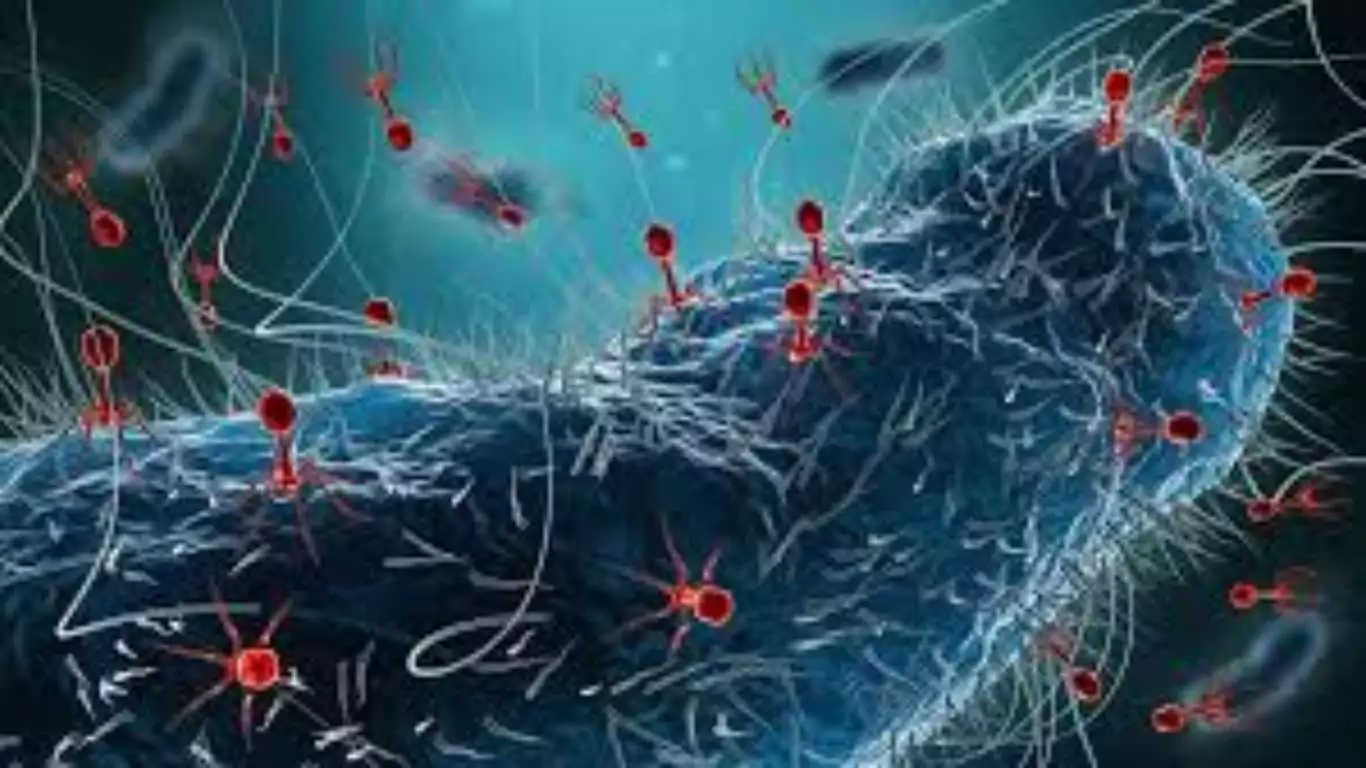As the world grapples with the growing threat of antibiotic-resistant bacteria, researchers are exploring alternative solutions to combat these resilient pathogens. One promising avenue lies in the use of bacteriophages, or phages, which are viruses that specifically target bacteria without harming humans or other higher organisms.
Phages operate by injecting their DNA into bacterial cells, using the host’s resources to multiply and eventually burst out to infect more bacteria in the surrounding environment. Essentially, phages are a naturally occurring, self-replicating antibiotic. Although they were discovered over a century ago, their use was largely overshadowed by the rise of traditional antibiotics.
In recent years, renewed interest in phages has emerged, particularly in light of the alarming increase in antibiotic resistance. New research has delved into the mechanisms by which phages bypass bacterial defenses, revealing a specific protein that plays a crucial role in this process. This protein, by binding to DNA and RNA, controls the phage’s ability to neutralize bacterial defenses, marking a significant step forward in utilizing phages to combat bacterial infections in both human health and agriculture.
MUST READ: Ministry Of Health Calls for Replacement Of Colonial-Era Convocation Attire In Medical Institutes
Understanding Bacterial Defense Mechanisms
Despite their potential, deploying phages to target bacteria comes with challenges. Much like how the human immune system fights off viruses, bacteria have evolved sophisticated defenses against phage infections. One such defense is the CRISPR system—now widely known for its applications in gene editing—which acts as a “molecular scissor” by cutting DNA into pieces, thereby destroying the invading phage.
In the context of combating antibiotic-resistant bacteria, CRISPR can pose a significant obstacle. A phage capable of killing a bacterial infection may be rendered ineffective if the bacterium’s CRISPR defense remains intact. This is where the study of anti-CRISPR proteins becomes crucial.
Researchers are investigating these anti-CRISPRs—proteins or molecules that phages use to inhibit the CRISPR defense mechanism. In cases where a bacterium possesses CRISPR, a phage with the right anti-CRISPR can neutralize this defense, enabling the phage to successfully kill the bacterium.
The Role of Anti-CRISPR Proteins in Phage Success
Recent research has shed light on how phages control the production of anti-CRISPR proteins. When faced with a robust CRISPR defense, phages naturally want to produce large amounts of anti-CRISPR to increase their chances of overcoming bacterial immunity. However, excessive production of anti-CRISPR can be toxic to the phage itself, hindering its ability to replicate and survive.
To manage this delicate balance, phages rely on another protein known as the anti-CRISPR-associated (Aca) protein. These Aca proteins regulate the phage’s counter-defense mechanisms, ensuring that the initial burst of anti-CRISPR production is quickly reduced to levels that allow the phage to focus on replication and eventual release from the bacterial cell.
This regulation occurs at multiple stages of the protein production process. For any protein to be synthesized, the gene sequence in the DNA must first be transcribed into messenger RNA (mRNA), which is then translated into a protein. Regulatory proteins often function by inhibiting either transcription or translation, acting as a “roadblock” by binding to DNA or RNA.
Interestingly, the Aca protein studied in this research demonstrates dual functionality, controlling both transcription and translation despite its structure suggesting it is primarily a transcriptional regulator. This dual control is essential for fine-tuning the production of anti-CRISPR proteins, especially as the phage replicates its DNA within the bacterial cell.
The Bigger Picture: Implications for Phage Therapy
This research provides valuable insights into the complex mechanisms that govern phage success in their battle against bacteria. The fine-tuned control of anti-CRISPR deployment is critical not only for the phage’s survival but also for its potential use as an alternative antimicrobial therapy.
Understanding the intricacies of anti-CRISPR-associated proteins could be the key to developing effective phage-based treatments for antibiotic-resistant infections. By leveraging this knowledge, scientists can enhance the ability of phages to overcome bacterial defenses, offering a new line of defense in the fight against drug-resistant pathogens.
As we continue to explore the potential of phages in medicine and agriculture, the detailed study of these proteins could make the difference between a phage’s success or failure—and, ultimately, between life and death for those battling antibiotic-resistant infections.


















